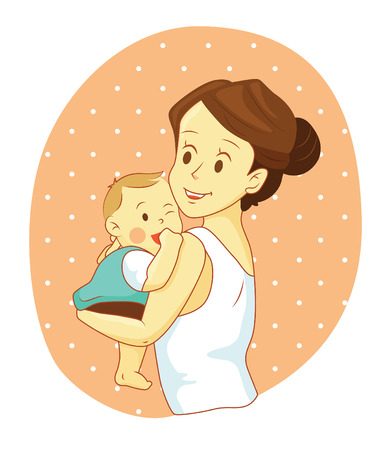Babys Growth and Development
The third trimester is an exciting time as your baby undergoes rapid growth and prepares for life outside the womb. Each week brings new developments, from final organ maturation to weight gain that will help your little one thrive after birth.
Week-by-Week Baby Development
Heres a closer look at how your baby is growing during the third trimester:
| Week | Development Milestones |
|---|---|
| Week 28 | Your baby’s brain is developing rapidly, and their eyes can now open and close. They may even start dreaming! |
| Week 30 | Your baby’s bone marrow takes over red blood cell production, an important step in preparing for life outside the womb. |
| Week 32 | Your baby starts practicing breathing movements, and their skin becomes less translucent as fat continues to accumulate. |
| Week 34 | The central nervous system is maturing, and your baby’s lungs are almost fully developed. |
| Week 36 | Your baby is likely in a head-down position, getting ready for birth. They continue to gain weight rapidly. |
| Week 38 | Your baby has a firm grasp and fully developed organs, though the lungs keep refining until birth. |
| Week 40 | Your baby is full-term! They’re ready to meet you anytime now, with all systems go for life outside the womb. |
The Importance of Weight Gain
A big focus during these final weeks is weight gain. Your baby will put on about half a pound each week, which helps regulate body temperature after birth. Fat stores also provide energy for the first few days of life.
Lung and Brain Maturation
The lungs are one of the last organs to fully mature. By week 36, they’re almost ready, but they continue producing surfactant—a substance that helps them expand properly—until birth. Meanwhile, brain development continues at a rapid pace, supporting everything from reflexes to future learning abilities.
Kicks and Movements
You’ll notice that your baby’s movements may feel different as space gets tighter. Instead of big kicks, you might feel more rolls and stretches. However, regular movement should still be present—if you notice a significant decrease in activity, contact your healthcare provider.
2. Common Symptoms and Changes in Your Body
As you enter the third trimester, your body undergoes many changes to prepare for labor and delivery. Some of these changes can be uncomfortable, but they are all part of the journey toward meeting your baby. Below are some common symptoms you might experience and what they mean.
Braxton Hicks Contractions
You may start noticing irregular contractions known as Braxton Hicks. These are often called “practice contractions” because they help your uterus prepare for labor. Unlike real labor contractions, Braxton Hicks are usually painless and don’t follow a regular pattern.
How to Tell the Difference Between Braxton Hicks and True Labor Contractions
| Feature | Braxton Hicks Contractions | True Labor Contractions |
|---|---|---|
| Timing | Irregular, no consistent pattern | Regular intervals, get closer together over time |
| Pain Level | Mild, more of a tightening sensation | Increasing intensity and discomfort |
| Relief with Movement | Tends to stop when you change position or rest | Persists regardless of movement |
Swelling (Edema)
Mild swelling in your feet, ankles, and hands is common due to increased blood volume and fluid retention. However, sudden or severe swelling could be a sign of preeclampsia, so always check with your doctor if youre concerned.
Tips to Reduce Swelling:
- Keep your feet elevated when sitting or lying down.
- Avoid standing for long periods.
- Drink plenty of water to help flush out excess fluids.
- Avoid overly salty foods that can contribute to water retention.
- Wear comfortable shoes with good support.
Fatigue and Sleep Disruptions
Your body is working hard to support your growing baby, which can leave you feeling exhausted. Additionally, frequent trips to the bathroom, heartburn, and an active baby kicking at night can make sleep challenging.
Ways to Improve Sleep:
- Create a bedtime routine: Try relaxing activities like reading or taking a warm bath before bed.
- Use pillows for support: A pregnancy pillow can help relieve pressure on your hips and back.
- Avoid caffeine late in the day: Cutting back on caffeine can improve sleep quality.
- Sit up slightly when sleeping: This can help reduce heartburn discomfort at night.
The third trimester comes with its fair share of challenges, but understanding these symptoms can help you manage them better. If anything feels unusual or concerning, never hesitate to reach out to your healthcare provider.

3. Preparing for Labor and Delivery
As you enter the final weeks of pregnancy, its time to get ready for childbirth. Knowing what to expect can help you feel more confident and prepared. Here’s what you need to know about the signs of labor, when to head to the hospital, and pain management options.
Signs of Labor
Your body will start giving you signals that labor is approaching. Some common signs include:
- Lightening: Your baby drops lower into your pelvis, making it easier to breathe but increasing pressure on your bladder.
- Increased Braxton Hicks Contractions: These practice contractions may become stronger and more frequent.
- Mucus Plug Loss: You may notice a thick or blood-tinged discharge as your cervix begins to prepare for labor.
- Water Breaking: A gush or slow trickle of fluid could indicate that your amniotic sac has ruptured.
- Regular Contractions: Unlike Braxton Hicks, true labor contractions are consistent, get stronger over time, and don’t stop with rest.
When to Go to the Hospital
If youre unsure when its time to leave for the hospital or birthing center, follow the 5-1-1 rule:
| Sign | Description |
|---|---|
| Contraction Frequency | Your contractions are coming every 5 minutes. |
| Contraction Duration | Each contraction lasts at least 1 minute. |
| Total Time | This pattern continues for at least 1 hour. |
You should also go to the hospital immediately if your water breaks, you experience heavy bleeding, or you have severe pain that doesn’t subside between contractions.
Pain Management Options
Pain relief during labor varies based on personal preference and medical recommendations. Here are some options:
Medication-Based Pain Relief
- Epidural: A common option that numbs the lower half of your body while allowing you to stay awake and alert.
- Nitrous Oxide: Also known as laughing gas, it provides mild pain relief and relaxation.
- Narcotic Pain Relievers: These medications can help take the edge off contractions but may cause drowsiness.
Natural Pain Management Techniques
- Breathing Exercises: Techniques like Lamaze or deep breathing can help manage discomfort.
- Movement and Positioning: Walking, swaying, or using a birthing ball can ease pain and help with labor progress.
- Water Therapy: Taking a warm bath or shower can provide relief from contractions.
- Aromatherapy & Music: Soothing scents and calming music can create a relaxing atmosphere during labor.
No matter how you choose to manage pain, having a birth plan in place and discussing your preferences with your healthcare provider ahead of time will ensure youre as comfortable as possible during delivery.
4. Nesting and Final Preparations
As you enter the final weeks of your pregnancy, you may experience a strong urge to clean, organize, and prepare for your babys arrival. This is known as the “nesting instinct,” and its completely normal! Now is the perfect time to get everything ready so you can feel more at ease when labor begins.
Setting Up Your Nursery
Your babys nursery should be a comfortable and safe space. Make sure all essential furniture, such as the crib, changing table, and rocking chair, are set up and securely assembled. Wash baby clothes, blankets, and bedding in a gentle detergent to avoid skin irritation.
Nursery Essentials Checklist
| Category | Items |
|---|---|
| Sleeping | Crib, mattress, fitted sheets, swaddle blankets |
| Diapering | Changing table, diapers, wipes, diaper cream |
| Feeding | Bottles, formula (if needed), nursing pillow |
| Clothing | Onesies, sleepers, socks, hats |
| Health & Safety | Baby monitor, thermometer, first aid kit |
Packing Your Hospital Bag
Packing your hospital bag ahead of time ensures youre prepared when labor starts. Its best to have it ready by week 36 so you’re not rushing at the last minute.
What to Pack for Mom, Baby, and Partner
- For Mom: Comfortable clothing, toiletries, nursing bras, maternity pads.
- For Baby: Onesies, receiving blanket, going-home outfit.
- For Partner: Snacks, phone charger, extra clothes.
Finalizing Important Details
A few last things to take care of before your little one arrives:
Create a Birth Plan
If you haven’t already, discuss your birth plan with your doctor or midwife. Decide on pain management options and preferences for labor and delivery.
Install the Car Seat
A properly installed car seat is a must before leaving the hospital. Follow manufacturer instructions and consider having it checked by a certified technician.
Plan for Postpartum Recovery
Stock up on postpartum essentials like pads, pain relief spray, and comfortable underwear. Also, arrange help from family or friends during the first few weeks after birth.
The third trimester is an exciting time filled with anticipation. By preparing your home and taking care of these final details now, youll feel more confident and ready to welcome your baby!
5. Emotional Well-Being and Support
The third trimester is an exciting time, but it can also bring a mix of emotions. As your due date approaches, you might feel anxious, overwhelmed, or even exhausted. Taking care of your emotional well-being is just as important as preparing for your baby’s arrival. Here are some tips to help you manage stress, seek support, and get ready for postpartum recovery.
Managing Stress in the Third Trimester
Your body is going through significant changes, and its normal to experience stress during this stage. Finding ways to relax and take care of yourself can make a big difference.
Simple Ways to Reduce Stress
| Activity | How It Helps |
|---|---|
| Deep Breathing Exercises | Helps calm your nervous system and reduce anxiety. |
| Gentle Prenatal Yoga | Relieves tension and improves flexibility for labor. |
| Listening to Music | Boosts mood and helps create a relaxing atmosphere. |
| Taking Short Walks | Improves circulation and clears your mind. |
Seeking Support from Loved Ones
You don’t have to go through this journey alone. Leaning on family, friends, or support groups can make all the difference in how you feel during these final weeks.
Ways Your Loved Ones Can Help
- Emotional Support: Talk about your feelings with someone you trust.
- Practical Assistance: Let others help with errands, meal prep, or household chores.
- Birth Plan Discussions: Share your birth plan with your partner or support person so they know how to assist you during labor.
- Joining a Prenatal Group: Connecting with other expecting parents can provide encouragement and helpful advice.
Preparing for Postpartum Recovery
The third trimester is the perfect time to start thinking about life after birth. Setting up a strong support system now can ease your transition into motherhood.
Postpartum Preparation Checklist
- Create a Rest Plan: Arrange for extra help in the first few weeks after birth.
- Stock Up on Essentials: Gather postpartum care items like pads, nipple cream, and comfortable clothing.
- Mental Health Awareness: Know the signs of postpartum depression and don’t hesitate to reach out for help if needed.
- Nourish Your Body: Prepare easy-to-make meals or ask loved ones to bring food during recovery.
Your emotional well-being is just as important as your physical health in the third trimester. By managing stress, leaning on loved ones, and preparing for postpartum recovery, you can set yourself up for a smoother transition into motherhood.


